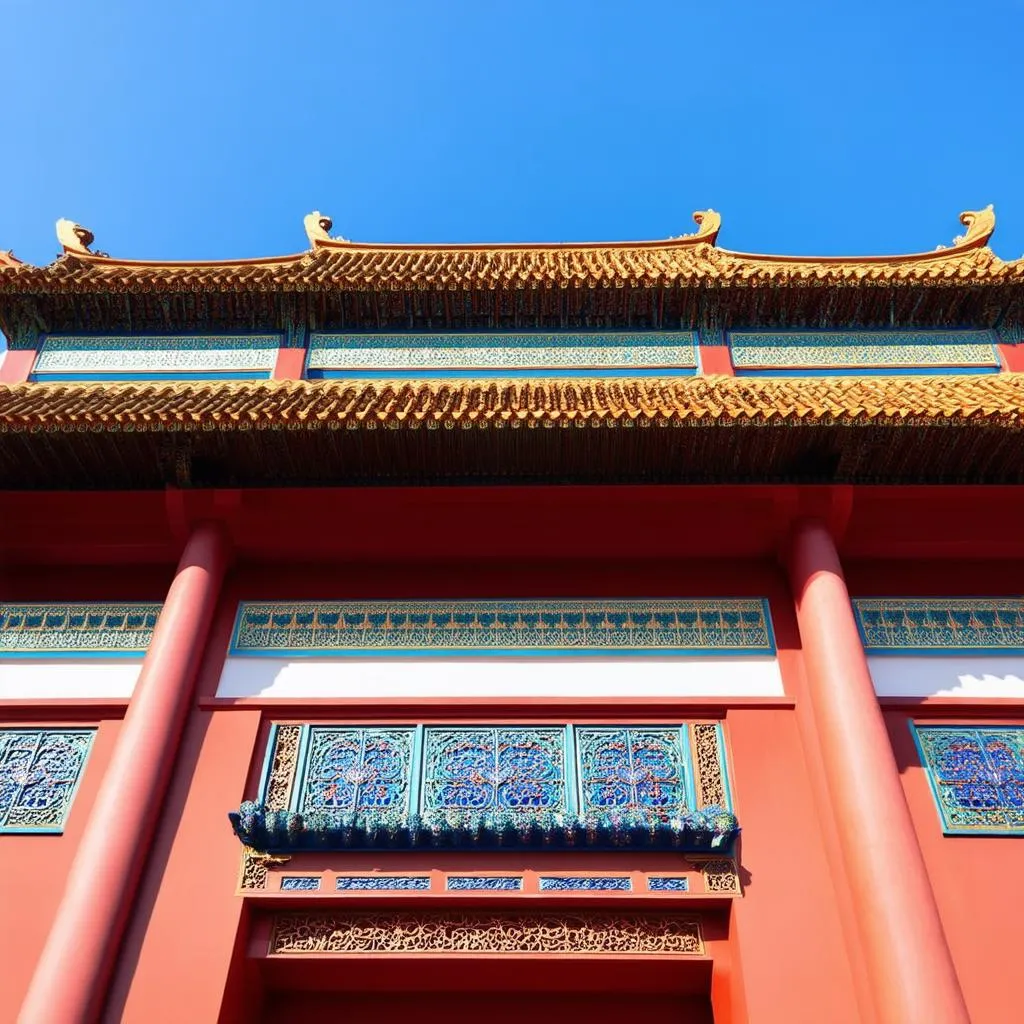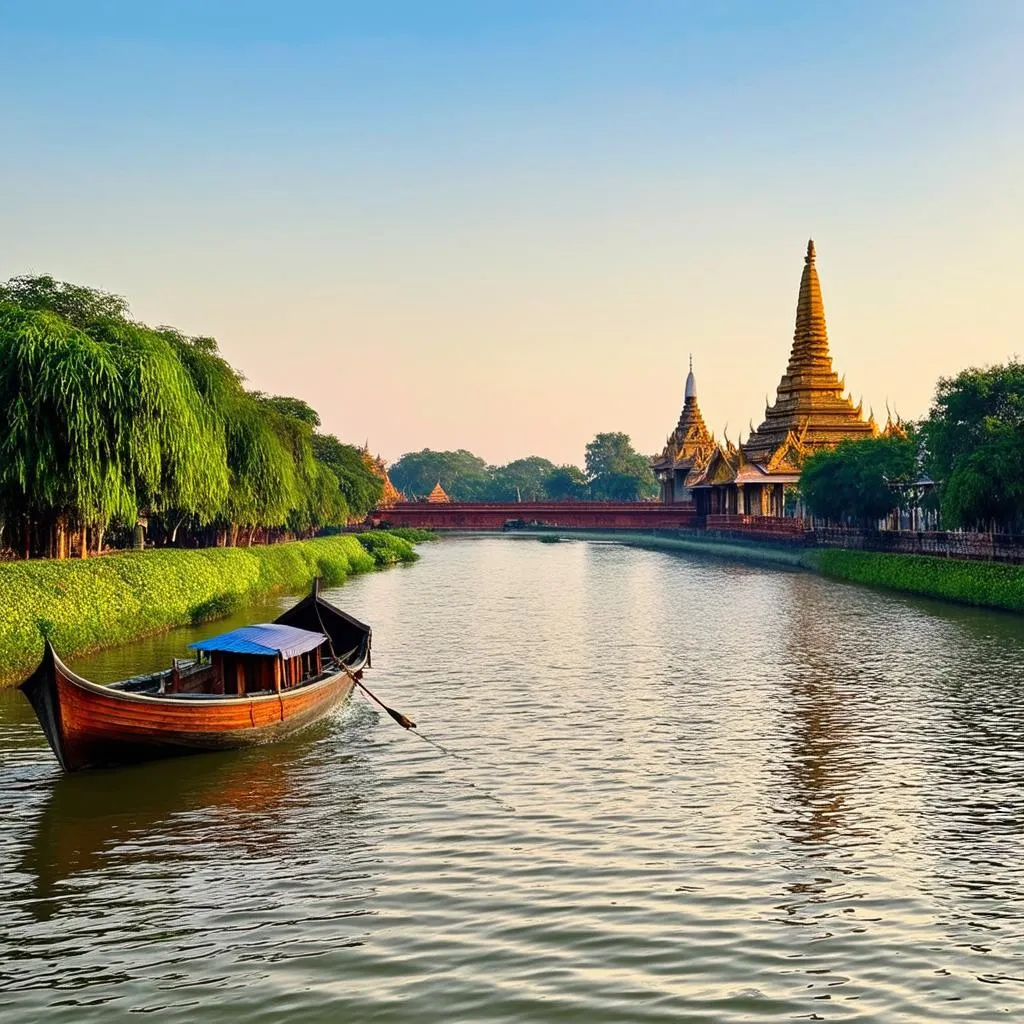“Hidden deep in the heart of Vietnam, a city of poetry and dreams awaits.” That’s how my grandmother used to describe Hue, her voice filled with a nostalgic longing. As a child, I was captivated by her tales of ancient emperors, majestic tombs, and serene pagodas reflected in the Perfume River. Years later, exploring Hue felt like stepping into one of her stories, each corner revealing a mesmerizing blend of history, culture, and natural beauty.
A Journey Through Time: Exploring Hue’s Rich Heritage
Hue, the former imperial capital of Vietnam during the Nguyen Dynasty, is a city steeped in history. From the UNESCO-listed Complex of Hue Monuments to the vibrant Dong Ba Market, every nook and cranny whispers tales of a glorious past.
Royal Grandeur: The Imperial Citadel and Tombs
Imagine strolling through the imposing gates of the Imperial Citadel, once the heart of Vietnam’s political power. Feel the weight of history as you explore the Forbidden Purple City, envisioning the lives of emperors and concubines who walked these grounds.
Venturing beyond the city walls, discover the elaborate tombs of the Nguyen emperors. Each tomb, a unique architectural marvel, reflects the personality and reign of the emperor it commemorates. The Tomb of Tu Duc, with its serene lake and lush gardens, offers a glimpse into the emperor’s poetic soul, while the Tomb of Khai Dinh, a fusion of Vietnamese and European styles, reflects his penchant for modernity.
Spiritual Sojourn: Pagodas and Temples
Hue’s spiritual landscape is as captivating as its historical one. Thien Mu Pagoda, perched gracefully on the banks of the Perfume River, is an iconic symbol of Hue. Climb its seven tiers for panoramic views and soak in the tranquil atmosphere.
Hon Chen Temple, dedicated to the goddess of the sea, is another must-visit. Participate in a traditional ceremony, breathe in the scent of incense, and witness the local’s deep spiritual connection.
A Sensory Feast: Hue Cuisine and Culture
No trip to Hue is complete without indulging in its unique culinary heritage. Famous for its delicate flavors and refined presentation, Hue cuisine is a treat for the palate.
- Savor a bowl of Bun Bo Hue, the city’s signature spicy beef noodle soup.
- Treat your taste buds to Banh Beo, delicate steamed rice cakes topped with savory shrimp paste.
- Conclude your culinary journey with **Che, a delightful array of sweet desserts.
 Hue Imperial City
Hue Imperial City
Planning Your Hue Adventure
Getting There and Around
Hue is easily accessible by plane, train, or bus. Phu Bai International Airport (HUI) connects Hue with major cities in Vietnam and internationally. Trains offer a scenic journey, while buses are a budget-friendly option.
Within Hue, cyclo tours are a popular way to soak in the city’s charm. Motorbike rentals offer flexibility, while taxis and ride-hailing services are readily available.
Where to Stay
From charming boutique hotels to luxurious riverside resorts, Hue offers a range of accommodation options to suit every budget and preference.
- For a taste of history: Opt for a heritage hotel housed in a restored colonial-era building.
- For stunning views: Choose a hotel overlooking the Perfume River or the city’s scenic landscapes.
- For a tranquil escape: Retreat to a resort nestled amidst nature on the outskirts of Hue.
Best Time to Visit
Hue experiences a tropical monsoon climate. The ideal time to visit is during the dry season, from February to August, when the weather is pleasant and sunny.
Budgeting Tips
- Accommodation: Dorm beds start from $5, budget hotels from $10, and mid-range options from $30.
- Food: Street food meals cost around $1-2, while restaurant meals range from $5-15.
- Transportation: Cyclo rides cost around $5-10 per hour, while motorbike rentals average $5-7 per day.
Enhancing Your Journey with Feng Shui
In Vietnamese culture, incorporating Feng Shui principles into travel is believed to attract positive energy and enhance the overall experience.
- Choose your travel dates wisely: Consult the Vietnamese lunar calendar and select auspicious dates believed to bring good luck and fortune.
- Pack colors associated with prosperity: Incorporate colors like red, yellow, and gold into your travel wardrobe to attract abundance and joy.
- Maintain a positive mindset: Approach your journey with an open heart and positive intentions to create harmonious and fulfilling experiences.
 Perfume River Hue
Perfume River Hue
Frequently Asked Questions (FAQs)
Q: How many days do I need to explore Hue?
A: Ideally, allocate 3-4 days to fully immerse yourself in Hue’s rich history, culture, and scenic beauty. This allows ample time to visit the major attractions, savor the local cuisine, and delve into the city’s spiritual side.
Q: What are some unique souvenirs to buy in Hue?
A: Hue is renowned for its exquisite handicrafts. Look for conical hats made from fine silk, intricate embroidery pieces, lotus tea, and traditional paintings depicting Hue’s iconic landscapes.
Q: Is it easy to get around Hue without speaking Vietnamese?
A: While English is not widely spoken outside of tourist areas, you can easily navigate Hue using translation apps, maps, and gestures. Most tour operators and hotel staff are proficient in English.
Unforgettable Experiences Await: Discover the Magic of Hue
“Travel is not just about seeing new places, but about collecting moments and stories,” says travel writer Sarah Johnson in her book “Wandering Souls.” Hue, with its timeless allure and captivating stories, offers a wealth of experiences waiting to be woven into your travel tapestry.
From the grandeur of its imperial past to the tranquility of its spiritual havens, Hue promises a journey of discovery and enchantment. So, pack your bags, embrace the unexpected, and let the magic of Hue unfold before you.
Don’t forget to share your Hue adventures and discover more travel inspiration on travelcar.edu.vn.